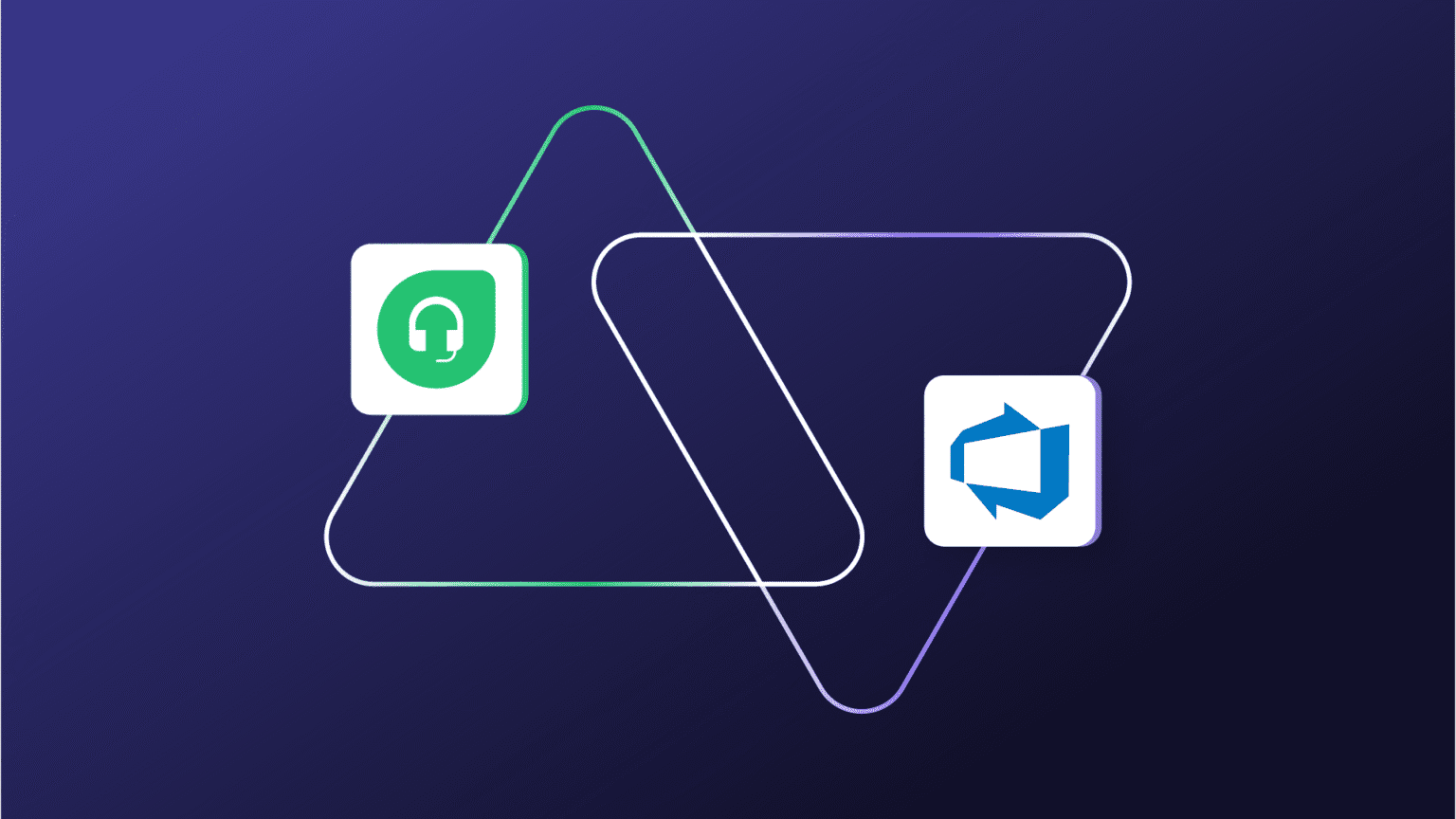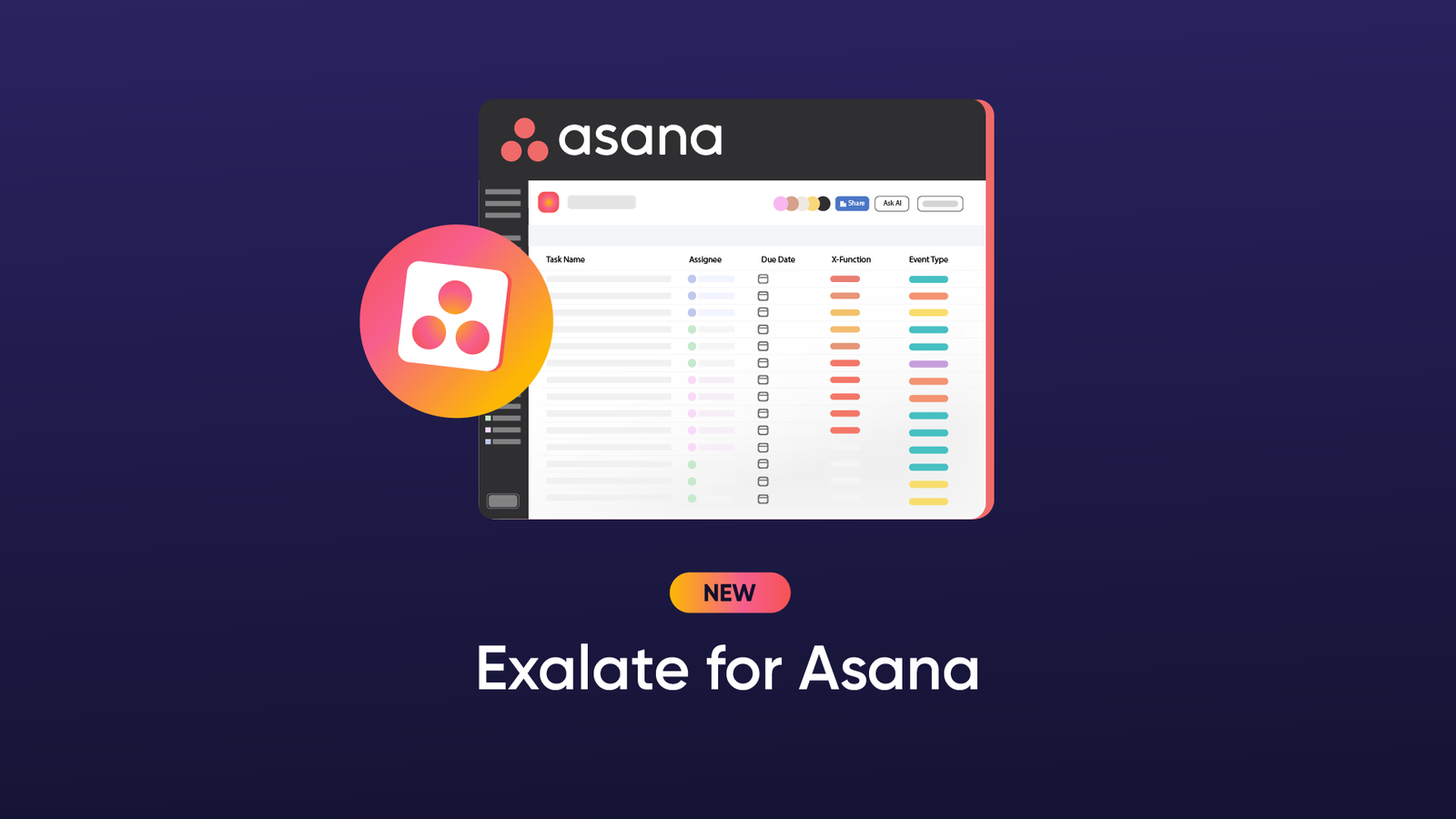Developers and customer service agents must be in perfect sync in order to address user concerns promptly and correctly.
But here is the thing: platforms like Azure DevOps and Freshdesk can’t exchange data by default without a bridge app. So if one side needs data urgently, they’d have to put in a manual request to get it.
Well, it doesn’t have to be this way. The alternative to manual data requests and exchange is through automation and integration. This will allow you to fetch vital information from specific fields in real-time.
All you need to do is find a Freshdesk Azure DevOps integration that can interact with the APIs of both platforms. This tool will also handle data transformation and keep the information secure.
In this article, I’ll walk you through the real-life implementation of Freshdesk Azure DevOps integration using real-world use cases.
Let’s get down to it.
What is Freshdesk Azure DevOps Integration?
Freshdesk Azure DevOps integration is the process of using native tools, custom scripts, or third-party apps to connect instances of both platforms.
As Freshdesk is commonly used by customer support staff, while developers use Azure DevOps, it is essential to get them on the same wavelength to make sure they share the data needed by both sides.
Why Integrate Azure DevOps and Freshdesk?
As mentioned earlier, syncing Freshdesk and Azure DevOps boils down to getting both platforms to communicate with each other and bridge the compatibility gap.
Here are the benefits of integrating Azure DevOps with Freshdesk:
- It allows teams working on both Azure DevOps and Freshdesk to stay in their own ecosystem, while still enjoying access to all the data they need—no need for context-switching at all, whether in intra-company or cross-company collaborations.
- Since your team or organization no longer has to spend on two different platforms, you’ll be able to save money instead of paying extra fees for licensing and subscription.
- It gives both sides access to more analytical tools because Freshdesk comes with omnichannel support that funnels all the customer data to an advanced analytics dashboard for proper context. This data can provide vital behavioral insights and map out trends.
- Integrating a help desk with a DevOps platform increases the resolution speed for pressing customer concerns, which makes them more satisfied with your products and services.
- Fresdesk to Azure DevOps integration smoothly irons out every ongoing resolution by providing timely updates and progress reports on demand. This helps managers improve their tracking and monitoring of work items and tickets in the pipeline.

Learn more about how we managed to sync Freshdesk with Jira to share information between interconnected teams.
What Should You Consider When Choosing Freshdesk Azure DevOps Integration Options?
Before settling on a single option for connecting Freshdesk and Azure DevOps, you need to make sure the solution ticks a few boxes. Let’s go through them in detail.
Flexibility and Scalability
Look for integration apps that offer flexibility to add extra projects, systems, and partners without crapping out. This also extends to the current volume and future expectations.
To avoid unforeseen catastrophes, pay attention to Freshdesk and Azure DevOps system integration tools that can adapt to increasing requirements and ticket loads. This will definitely come in handy after major releases or security incidents.
Affordability
Choose a solution that offers a favorable pricing model for your use case. Start with the offerings that are available for free and move on to those with subscription and licensing fees.
The trick is to find a solution that can handle your use case at the lowest possible price point, while offering all the features you need.
Security and Privacy
Security when handling data is non-negotiable. It should form the core of your choice because most of your partners would not want to compromise on security.
To be on the safe side, check the integration security features for data transfer and storage policies for sensitive information. Verify that the solution is compliant with global and regional industry regulations.
Exalate addresses this security concern by deploying multiple layers of security. Find out more about this from our Trust Center.
Type of Integration Solution
You can choose native, custom, or third-party integrations, depending on your business’s technical requirements and available funds.
- Native integrations for connecting different e-commerce, communication, and work management applications. These are usually hosted by Freshdesk or Azure DevOps, but provide limited synchronization options.
- Custom solutions produced and maintained in-house for specific use cases. However, the cost of such solutions managed internally can skyrocket as the integration use case expands.
- Third-party applications that allow bidirectional data exchange between CRMs, ERPs, and cloud solutions. This option is the perfect balance of default syncs and custom connectors. The third party manages the solution and offers the iPaaS (IaaS) option to interested customers. You can also customize your integration.
One third-party solution that supports bidirectional Azure DevOps Freshdesk integration is Exalate.
Why Use Exalate?
Exalate is an AI-powered integration tool that supports one-way and two-way custom connections between Freshdesk and Azure DevOps, as well as work management and sales platforms such as Salesforce, Jira, and GitHub.
Exalate stands out for the following reasons:
- It isolates your system from other companies using its single-tenant architecture.
- It supports Groovy-based scripting mode for advanced integration scenarios.
- Exalate uses automated triggers to specify conditions for automatic ticket or work item escalation.
- It also comes with an AI chatbot called AI Assist to automate the process of generating scripts.
- The IaaS option allows you to offload the integration and configuration hassle to experienced engineers.
- Exalate also scales according to the ticket volume or the number of work items without needing additional maintenance or upgrades.
What Are the Use Cases for Freshdesk Azure DevOps Integration?
Here are some practical applications of Freshdesk to Azure DevOps integration for organizations:
Case 1: Escalate Support Tickets to the Development Team
Freshdesk Azure DevOps data integration makes it possible for companies and teams to escalate tickets from support (L2) to teams responsible for addressing customer concerns (L3).
You can sync the comments and attachments of a ticket created by a customer in Freshdesk so that it appears on the Azure DevOps side. You can also use one-way syncs to share internal fields such as group_id and responder_id from Freshdesk.
Also, users can sync any field (including custom fields) that is accessible via the Exalate API. Connecting multiple systems like that will maintain a clear pathway for support tickets from adoption to resolution.
Case 2: Map Multiple Freshdesk Tickets to A Single Azure DevOps Work Item
When multiple customers or organizations generate tickets on a Freshdesk instance, the information gets synchronized to a single Azure DevOps work item (task or bug) in order to consolidate everything in a single truth source.
Companies providing customer support as a dedicated service can use this to consolidate information from multiple users instead of duplicating concerns and causing confusion.
So let’s say there’s an influx of tickets complaining about a faulty payment gateway. All tickets related to this feature will be escalated to Azure DevOps as a bug.
This gives the devs all the contextual information. And once a fix is implemented, the customers will receive instant updates on their individual tickets.
Case 3: Share Instant Updates Between Freshdesk and Azure DevOps
As part of keeping teams and MSPs in sync, you can integrate Freshdesk with Azure DevOps to ensure that every side gets instant updates and progress reports about the reported issue.
The incoming ticket priority will also be reflected in the work item. This will help managers organize and automate their workflow to ensure all the pressing tasks from high-value customers are always at the front of the queue.
Let’s say we want to map status between Freshdesk and Azure DevOps. We can prompt AI Assist to come up with code for this (we’ll discuss this feature in more detail later on).
The prompt will look something like this:
Map incoming Freshdesk statuses to Azure DevOps statuses: ‘Open’ maps to ‘To Do’, ‘Pending’ maps to ‘In Progress’, ‘Closed’ maps to ‘Done’.
Make changes to the resulting script to get precisely what you want. Always remember that AI tools are prone to errors before publishing changes.
How to Install and Implement a Functional Freshdesk Azure DevOps Integration
Step 1 – Install Exalate on Azure DevOps
You can install Exalate on Azure DevOps either from the Azure DevOps marketplace or the integrations page.
First, you need to sign in to your Azure DevOps instance as an admin. Then, navigate to the Azure DevOps marketplace and search for “Exalate for Azure DevOps Integration”.
Then, press “Get” before selecting the organization that contains your Azure DevOps.
Choose the organization from the dropdown and press “Install”. You are all set!
Exalate App for Azure DevOps can be installed on the server using Docker. For the step-by-step procedure to install Exalate for Azure DevOps on Docker, visit this page.
Step 2 – Install Exalate on Freshdesk
Request your Freshdesk Exalate node from the integrations page. Enter your basic information, and our team will reach out to you with further details for the trial.
After submitting the form, you will be redirected to your new node in a separate tab. Save the link to this node, as it serves as your permanent access point to the Exalate Freshdesk node.
Next, fill in and save the General Settings fields by providing your Freshdesk instance and the credentials of the Exalate proxy user.
Note: A proxy user is a Freshdesk account that is responsible for accessing the information stored on your instance and applying any incoming changes.
The form fields signify the following:
- Tracker URL: a URL of your Freshdesk account where you install Exalate.
- Exalate URL: a Freshdesk node URL, provided by Exalate.
- User: an account of a proxy user.
- Password / API Token: an API key generated for your Freshdesk proxy user. See details here.
To complete the registration, provide the details and credentials of the user who will configure synchronization in the Exalate console. Then, read and agree to the End User License Agreement.
An email confirmation will be sent to your mailbox. If you can’t find it in your inbox, check the spam or junk folder.
In the confirmation email, click “Verify Exalate Instance.” This will redirect you back to the Exalate console application to configure your first sync.
To change the proxy user in Exalate for Freshdesk, log in to the Exalate admin console. Then go to Settings and input the following details:
- Freshdesk instance URL.
- Proxy user email.
- Proxy user API key.
Once done, click Save to complete the Freshdesk installation process.
Step 3 – Connect Your Azure DevOps and Freshdesk Instances
Exalate allows you to set up your connection using two modes: the Basic Mode and the Script Mode.
Exalate’s Basic Mode allows you to work with preset sync rules that are generated automatically and cannot be modified. These connections are recommended for use cases with basic synchronization needs.
The Script Mode allows you to sync almost anything. You can modify the sync rules using the “Groovy Scripting” language. This mode is also AI-assisted. We will learn more about it in the coming section.
Basic Mode Connection
To kick things off, let’s start with the simple Basic Mode connection from the Azure DevOps side.
Click the “Initiate connection” button. Then enter the destination URL and select the Basic Mode.
Confirm if you have admin access to the destination instance. The flow is different depending on the user’s access level. We’ll cover both instances.
Select a project from the dropdown menu where you would like to sync tickets received from the destination side, then click “Next”.
If you have admin privileges, click on “Yes, I have admin access” and then click “Next”. You’ll be redirected to the destination instance (Freshdesk) to establish a connection. After a quick verification, your connection in the Basic mode is ready.
You can now sync your first ticket or work item in Exalate to see how it works.
If you don’t have admin privileges, then click “No, I have admin access”. Click on “Initiate”.
Copy the invitation code to your dashboard.
You can send the invitation code to the destination instance admin and click “Done”.
Next, go over to the destination instance. Click on “Accept Invitation” under the Connections tab in the Exalate Admin Console in the destination instance and paste the invitation code.
Once pasted, click “Next” to complete the configuration and set up the connection.
You can now start your first sync by entering a case number or ticket number.
Script Mode Connection
Enter the Destination Instance URL, then select Script Mode and click “Next”.
After selecting Script Mode, you will see a screen where you can enter the details of the connection.
Enter the names and description of the connections for both the local and remote instances. Click “Next” once you’re done.
Select a project where you would like to sync entities received from the destination side. Then click “Initiate”.
Copy the invitation code to your clipboard and click “Done” before heading over to the destination instance.
To finish setting up the connection, your partner on the Freshdesk side needs to accept the connection invitation.
Navigate to the Connections tab in the Exalate console and click on “Accept Invitation”.
Paste the invitation code and click “Next”.
Congratulations! The connection is set up.
You can now start making changes to the sync by clicking on “Configure Sync”.
Step 4 – Configure Your Connection to Determine What Gets Shared
Exalate also allows you to configure the sync rules using the “Rules” tab if you want to script the sync later.
Click on the “Edit Connection” icon next to the Script mode connection to be redirected to the “Rules” tab.
Rules are divided into Incoming and Outgoing sync rules (similar tabs for sync rules exist on the Freshdesk side).
Outgoing sync decides what information leaves the Azure DevOps instance, whereas the Incoming sync decides how the information coming from the Freshdesk instance is mapped.
The rules use the Groovy language, which you can learn more about in the Exalate Academy or our Groovy scripting guide.
Each rule shows how fields are mapped onto each other.
For example, helper functions help you map lists of comments or attachments from one instance to another, such as workItem.comments = commentHelper.mergeComments (workItem, replica).
Read more about the sync rules here.
When you’re done, click the green “Publish” button to save your changes.
Use AI to Generate Sync Rules in Script Mode
Exalate’s Script mode now gives users access to AI Assist, which appears as a chat window in both your incoming and outgoing sync rule tabs. All you have to do is enter your sync requirements, and AI Assist will automatically generate the scripts for you.
Let’s say you want to map the status of the incoming Freshdesk ticket to the status of the local Azure DevOps work item.
The part highlighted in green is the added code, while the part highlighted in red is the deleted portion. If you’re satisfied with the output, click “Insert Changes”.
Otherwise, click “Discard”. These scripts are built based on your inputs, existing settings, and Exalate’s scripting API.
Keep in mind that AI Assist isn’t foolproof. To get the best results, be as precise and detailed as possible when crafting your prompts.
Step 5 – Set Up Automated Synchronization Triggers
Triggers define the synchronization conditions based on specific user actions or events. If you click the “Triggers” tab in the edit connection screen, you can access the automated synchronization triggers.
You can also find all of your active triggers by clicking “Triggers” in the left-hand menu.
If you follow the first method and want to create a new trigger, click the “Create Trigger” button at the top right.
Triggers are written in a different language depending on the platform. Azure DevOps uses its work item query language, which is different from Groovy. Read more about it in the documentation.
On the “Add trigger” screen, there’s a drop-down box at the top where you can select what kind of entity the trigger applies to.
For Azure DevOps, use the work item query language to specify the filter query. Here is an example:
[Work Item Type] = 'Bug' AND System.TeamProject = 'RescueOp'
This query syncs work items of type within the project called “RescueOp”.
You can also add a note describing what the trigger does and set the trigger to “Active”. If you don’t do that, it won’t work!
Finally, click the “Add” button at the bottom to complete the setup.
You can also set up triggers on the Freshdesk side to control how the solution works.
filter = new_and_my_resolved AND requester_id = 103099012345
This query filters for new and resolved tickets that are assigned to the user (with ID 103099012345).
Back in the trigger list, you can see the entry you just created. Now, items that match the condition will be synced automatically.
You can edit or delete these triggers by clicking the respective icons in the list under the “Action” heading. If you click the three dots, you also get the option to “Bulk Exalate” and “Unbulk Exalate”.
Step 6 – Start Synchronizing Tasks
You’ve set up your Freshdesk Azure DevOps integration and defined what is shared. You’ve also set the conditions for synchronization. When a work item or ticket meets those conditions, it will be synced.
Exalate checks for matching items periodically, so if you don’t see the sync begin immediately, check again after a few minutes.
After a while, you should see the synced items reflected in the connection entry in the connections list. If not, make sure your sync rules and triggers are set up correctly.
What are the Challenges and Limitations of Freshdesk Azure DevOps Integration?
Setting up a sync between Azure DevOps and Freshdesk comes with a few technical hurdles.
Since sensitive customer information will be flowing between both platforms, you need a slew of security features to protect the data. This includes encryption protocols, API keys, firewalls, etc.
In a team with multiple members, permissions are needed to keep tabs on who can access and make changes to the script. The user account used for the API tokens must have the right to create/edit tickets and work items.
Most solutions support only standard fields (title, description, priority) sync, which limits the scope of applicability. To stretch this limit, you need more customization options. So if you want to add a custom field, that’d require manual configuration and debugging.
When a sync inevitably fails, you’ll need access to a debugging console or troubleshooter for smooth error handling to figure out what the blocker is. Some tools don’t have enough troubleshooting tools to point out if the correct path has been referenced or if the right values are being fetched.

Worried about information security? Read our whitepaper to see how we keep your data safe.
Get Started with Your Freshdesk Azure DevOps Integration
Azure DevOps and Freshdesk integration can improve your team’s quality of support, which will directly enhance customer satisfaction.
But before choosing any integration solution, make sure it is the perfect fit for your company’s technical use case. Features like security, custom field support, and automated event triggers should top the checklist. You must also factor in your organization’s budget and vision.
A tool like Exalate can provide you with seamless one-way or two-way connectivity with partners, clients, MSPs, and internal teams.
Find out more about how Exalate works. To discuss your use case and see if Exalate is the right choice, book a demo with our integration engineer.
Recommended Reads
- Freshdesk Jira Integration in the Age of Customer Satisfaction
- How To Map and Sync Statuses and Correlation Details
- How to Sync Date and Time Formats between Azure DevOps and Jira Cloud
- How to Sync Side Conversations between Zendesk and Jira
- Why Cross-Platform Integration is the New Wave for Organizations



